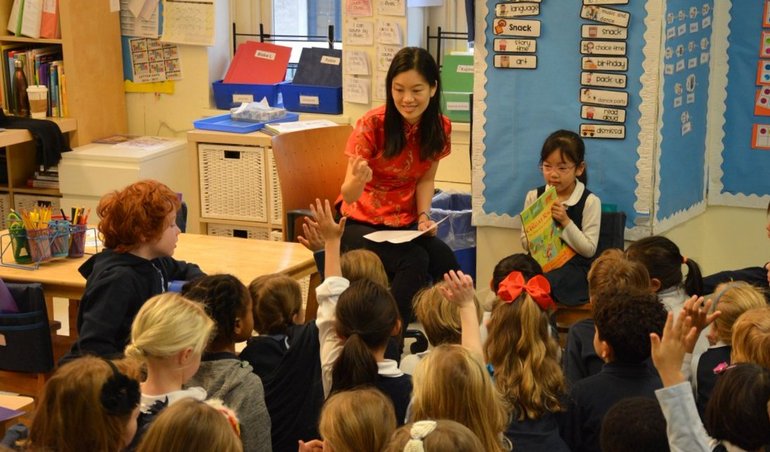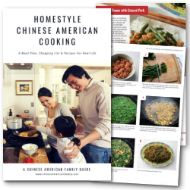This post is part of our collection of Home Projects. Sign up for our newsletter to receive family-friendly activity, recipe and craft ideas throughout the year!
When I visited my son’s preschool to read Lunar New Year stories, I remember the eager hands around the circle stretching upward when I asked who else would be celebrating. That brief moment reminded me how important it is for all kids to hear their stories told among their peers.
Walking home, I reflected that helping commemorate the Lunar New Year in the classroom provided benefits, whether the kids had a family connection with the holiday or not. For those celebrating, there was pride and recognition. For the others, there was a new connection with their classmates and a culture that was not their own.
Representation matters, especially at school where cultural differences can be the basis for teasing, bullying or social exclusion. By getting involved, parents can help build an understanding and acceptance of a broader set of cultures in the classroom.
Sharing our cultural expertise and family experiences is a valuable way for us as parents to contribute at school, but it may not be obvious how to get involved. I’m not an educator and the idea of standing in front of a room full of kids terrified me, but if I can do it, so can you.
As the school year kicks into gear this fall, here are 6 tips for getting involved as your child’s classroom parent for Chinese culture.
Your turn! Have you visited your child’s classroom to share a Chinese holiday or other cultural topic? What did you do? I’d love to hear from you in the comments section below!
1. Engage with Your Child’s Teacher Early in the Year
Approach your teacher at the beginning of the school year when requests are made for volunteers, donations and other classroom contributions. Identify yourself as a cultural resource, suggest ideas and determine your teacher’s need. Holidays like Lunar New Year, the Mid-Autumn Festival and the Dragon Boat Festival are perfect for classroom presentations. Food and history are easily shared during Asian Pacific American Heritage Month. It’s also fun to explore “crossover” cultural opportunities, such as talking about Chinese joss paper rituals around Halloween and Día de los Muertos.
2. You Are Enough
Don’t feel like you have to be an expert before volunteering — your personal knowledge and experience are enough to contribute. Kids will benefit from hearing about your personal connection with a holiday or your family’s particular experience during historical events. If necessary, you can always supplement your own stories with picture books from the library or information from web sites like Chinese American Family (of course!). The most important thing is that the kids hear from you. Focus on your part of the truth.
3. Balance Pride with Inclusion
As you prepare, don’t get hung up on labels. Culture and history aren’t rigidly defined by adherence to specific practices or connections with a particular ethnic group. What’s important is that kids feel seen and connect with each other with respect and curiosity. Share specifics about honoring ancestors during the Qingming Festival or details about the fight for civil rights during the Chinese Exclusion Period, but make them accessible through universal themes like the importance of family and progress toward equality. Connecting with Chinese culture does not require being Chinese.
4. Make it Fun and Help the Kids Get Involved
When I planned Lunar New Year activities for my son’s preschool, I found that 25 minutes was just about the right amount of time. That left 10 minutes for an interactive story time, 10 minutes for a craft project and 5 minutes for sharing. You can find a list of children’s books and craft projects at Chinese American Family to help. During my morning in class, the kids were able to make Chinese lanterns and show them off together as a group.
5. Leave Something Behind to Take Home
A red envelope for Lunar New Year. A small mooncake for the Mid-Autumn Festival. A dragon boat coloring sheet to share with a sibling. Leave a small memento of your presentation in each child’s cubby, so that the conversation can continue at home when the child is asked what happened at school that day. Perhaps you’ll also inspire another parent to contribute their own family’s culture in the future!
6. Don’t Forget Non-Cultural Volunteer Opportunities
Volunteering your cultural expertise is one valuable way to get involved in your child’s classroom, but it shouldn’t come at the expense of helping to meet your teacher’s other needs. Don’t forget to help out by chaperoning field trips, breaking down or assembling workbooks and contributing financially, when the call arises. Getting involved at school will make you a hero in your child’s eyes, in whatever form that participation takes.
HT: Photo by Grace Church School.





Cheryl Martinez
Hi Wes,
I am mother to two daughters from China. From the first year of pre-school through fourth grade, I offered to do a Chinese New Years lesson each year in their classrooms. The lessons grew and changed each year to stay age appropriate. One of the most fun activities was to learn how to use chopsticks by practicing with popcorn (popped, of course). Each year I approached either Panda Express or a similar restaurant and asked for donations of chopsticks and the plastic helper clips. I gave my daughters the option to dress in traditional Chinese dress if they wanted to, but never forced it.
In the younger grades, we would start by finding China on the globe, counting to ten in Mandarin a few times, explaining the Lunar calendar and then reviewing the importance of CNY, the individual meaning of each of the 15 days of CNY and talking about the typical traditions observed. We made red banners for the kids to decorate their own homes, made red lanterns and showed video’s of Lion Dances. As they got older, we had the class make CNY cards for their parents with Mandarin script taught by my daughters.
My girls are both in High School now, where they continue to learn Mandarin . They started attending Saturday school when they were two and continued until they wanted to stop which was near the end of grade school. This gave them the opportunity to perform in a CNY show every year as well as hear the language from a very young age. I treasure those memories and I’m so happy to have found your site.
Cheryl
Wes Radez
Cheryl, I’m so glad that you shared your tips and memories — thank you! I especially appreciated the advice about ways to evolve your presentation from year to year to remain age-appropriate. Well done, those kids were lucky to have you! ~Wes